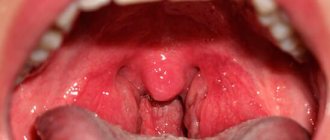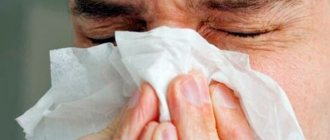There are many diseases that cause great concern to women and require careful attention. These diseases include vaginal candidiasis, which is increasingly found today among diseases of the genital area. Every year, this disease is becoming more common around the world.
According to statistics, almost every woman has heard of or encountered a problem called vaginal candidiasis.
More than half of women experience thrush
The reasons for its occurrence are the proliferation of the Candida fungus, which is found in the human body and does not bother him in any way if he is in good health. However, with a decrease in immunity, the fungus begins to actively multiply and spread in the body, affecting many organs and disrupting the functioning of all systems as a whole. Vaginal candidiasis and its symptoms can be familiar to women of any age. Even though the pharmaceutical industry is developing more and more drugs every year that can treat yeast infections, the number of diseases is not decreasing and we can even say that it is increasing more and more.
According to statistics, vaginal candidiasis occurs in gynecology more often than any other disease. Almost 80% of women seek help from specialists with acute or chronic forms of candidiasis. In everyday life, this disease is also called vaginal thrush.
Symptoms of vaginal candidiasis
Bacterial vaginosis is an infectious disease of the vaginal mucosa. Essentially, it is an infectious type of fungal disease that is caused by fungi such as Candida. It occurs predominantly in women who are sexually active, but can also occur in adolescents, and sometimes even in young children. It is popularly called “thrush”. It is treated with antifungal agents in the form of vaginal ointments, suppositories and oral medications. It can be transmitted sexually, but in men the signs of the disease are practically invisible, but in women it manifests itself in a fully symptomatic picture. Thrush causes a woman an unpleasant feeling of dryness, burning and itching, which causes quite a lot of discomfort both in everyday life and in intimate life.
How is candidiasis treated?
Treatment for thrush will depend on the stage of development of the disease. If the disease appears for the first time and is mild, the doctor will most likely prescribe local medications; if candidiasis is recurrent or at a severe stage, a course of antifungal drugs is necessary. Let's look at the most popular medications to combat candidiasis.
- Flucostat comes in capsules and suppositories; their main component is fluconazole, which has an antifungal effect. For the primary occurrence of candidiasis, a single dose is usually indicated.
- Clotrimazole is available in tablets, solutions, ointments and creams. It is one of the most popular drugs to combat vaginal candidiasis.
- Nystatin is a tablet or suppository, usually prescribed for the initial occurrence of thrush. The drug must be taken for a long period of time (more than a week), since it does not have the same rapid antifungal effect as previous drugs.
- Miconazole is available in tablets, gels, suppositories, and also in an alcohol solution. Destroys the fungus by disrupting intracellular processes.
- Ketoconazole is available in tablets, ointments, creams and solutions. The tablets are taken for 5-10 days. Women who have renal failure should be more careful with the drug.
- Candide is a solution that must be applied to the mucous membranes of the vagina and vulva. When applying the product, a burning sensation occurs, which quickly passes. The itching of thrush does not bother you a couple of hours after using Candida.
Important! The dosage and duration of taking any drug must be prescribed by a doctor. Thrush may be a sign of a more serious disease, so do not self-medicate; consult a specialist who will determine the cause and diagnosis of the disease.
Interesting also: Thrush from sweets
You can find out more reviews about the drugs from your gynecologist or read them on the Internet.
In the fight against candidiasis, you can resort to traditional medicine, but doctors recommend using such remedies in combination with medications or not using them at all. So, how do people treat candidiasis?
- Chamomile. To prepare the infusion, take 2 tbsp. l. dried chamomile and pour boiling water over it, leave for 2-3 hours. Douching can be done up to three times a day. Chamomile has wonderful antibacterial properties; it will protect the vaginal mucosa and reduce inflammation.
- Sage. This herb will help relieve itching, just like chamomile is a good antiseptic. In order to make an infusion, pour 2 tbsp. l. dry sage with warm water. You can douche twice a day.
In order for the herbs to retain their beneficial properties, do not pour boiling water over them.
- Soda. A mixture of soda is quite a risky option; this table product can have a detrimental effect on the mucous membrane and change the acid balance, so during such douching, the vagina will be less protected from candidiasis. The proportion of the solution is 1 tsp. soda per 1 liter of not very hot water.
In addition to treatment, a woman must adhere to a diet. It is necessary to remove foods that contain large amounts of sugar from your diet. Try not to eat foods with a high percentage of starch, the body processes it into glucose, this will contribute to the growth and reproduction of the fungus. Also exclude products with yeast. Doctors recommend consuming more yogurt or other fermented milk products with a high content of beneficial bacteria. They will help prevent the development of candidiasis and reduce the risk of relapse.
If thrush is not treated for a long time, it can become chronic and in addition to frequent manifestations (more than 4-5 times a year), it can provoke a number of complications affecting other genital organs. Then, in addition to thrush, cervicitis, cystitis and urethritis will appear. A particularly dangerous situation is when candidiasis masks other infections, in particular those that are sexually transmitted. The consequences of such a “union” can be infertility and serious inflammatory processes.
The main causes and routes of infection of vaginal candidiasis
Bacterial candidiasis is a fungal infectious disease, so the causes and routes of infection are very diverse. Its appearance can be influenced by both external and medical factors. So among the main reasons are:
-weakened immunity - weakened immunity can become an impetus for the development of the disease, but this is not the main reason, since if a woman has not previously suffered from this disease, then it cannot arise on its own. In most cases, candidiasis is not treated, but is healed before the onset of a favorable period for its development;
-frequent change of sexual partners - as mentioned earlier, bacterial candidiasis can be transmitted sexually and it can be transmitted both from woman to man and from man to woman;
-failure to maintain intimate hygiene – every woman should use only her own intimate hygiene products and her own underwear. Also, for intimate hygiene, you should not use ordinary toilet soap or shower gels; they can severely dry out the mucous membrane and kill the acidic environment of the vagina. Lactic acid secreted by a woman’s vagina is a barrier to infection, including fungal infections. Therefore, a decrease in vaginal acidity contributes to the development of fungal diseases;
-trauma to the vaginal mucosa - such injury can occur as a result of improper use of vaginal rings, careless administration of vaginal medications or ablation of the vaginal mucosa. Injury to the mucous membrane leads to the development of this disease and other infectious diseases;
- long-term use of antibiotics - long-term or uncontrolled antibiotic therapy can lead to the development of candidiasis, just like an antibiotic, it is essentially the same fungus, only it has medicinal properties. However, if such drugs are abused, they affect the mucous membranes and already have parasitic properties. In this case, both adults and children are susceptible to the disease;
-tight and poor-quality underwear - poor-quality underwear or wearing it incorrectly can lead to injury to the external genital organs and cause infection to penetrate inside;
- the use of aggressive vaginal drugs that reduce the protective functions of the mucous membrane - the use of such drugs has a detrimental effect on the vaginal mucosa and reduces its protective functions, therefore, in parallel with them, the woman is prescribed antifungal agents;
-frequent douching – when douching, strong water pressure can damage the walls of the vagina and also be a source of pathogenic bacteria, so you should not abuse this procedure.
Causes of thrush
There are several main reasons that can trigger the development of vaginal candidiasis in women.
- Taking antibiotics. In difficult situations, when the immune system cannot cope with a complex disease on its own , antibiotics are prescribed. Antibiotics are antibacterial drugs and, unfortunately, they do not destroy Candida fungi (fungi have a different cell wall structure). The drugs cannot act exclusively on pathogenic microorganisms, therefore they also have a bad effect on the vagina’s own microflora. Subsequently, a disturbance of the microflora occurs (dysbacteriosis), the “good” bacteria that controlled the growth of the fungus die, and good conditions are created for the development of the Candida fungus.
- Decreased protective function of the immune system . Chronic or frequent diseases lead to a decrease in immunity, which causes a violation of the protective field of the vaginal mucosa. The pathogenicity of the fungus is activated and the infection begins to spread. It is precisely because of immunodeficiency that thrush constantly worries women with HIV or AIDS.
- Metabolic disease . Disturbances in sugar or fat and protein metabolism can cause candidiasis. Diabetics are especially susceptible to such disorders, and subsequently to the development of candidiasis.
- Diseases or disorders of the endocrine system . The endocrine system, like the immune system, is responsible for many processes. Therefore, endocrine diseases such as diabetes, hypothyroidism or obesity can provoke a malfunction in the body, which will lead to the development of vaginal candidiasis.
- Incorrect or unbalanced diet. Almost every woman likes to treat herself to something sweet: chocolate, baked goods, sweets, soda. The pancreas seriously suffers from this; it cannot produce such a large amount of hormone in order to reduce the amount of glucose to normal. The more sugar remains in the blood, the more it is in the vaginal epithelium; it turns out that the woman herself creates a “sweet” environment for the development of Candida fungi.
- Hormonal imbalances . Hormones control the amount of fungi in a woman’s body. Any hormonal imbalance can trigger the development of candidiasis. This often happens before menstruation, during pregnancy, or due to taking hormonal medications.
- Unprotected sexual intercourse. In men, the disease often occurs without any symptoms, so, without knowing it, he can be a carrier of the fungus. In this case, treatment for thrush is necessary not only for the woman, but also for her partner, otherwise one-sided treatment will not bring any results, on the contrary, the situation may worsen.
- Failure to comply with hygiene rules after defecation . Candida fungi can live in the intestinal environment, so with improper or poor hygiene, the fungus can move from the intestines to the vagina.
- Pads or tight, low-quality underwear . Poor underwear and improper use of sanitary pads can create conditions of increased humidity in the vagina, which is an excellent habitat for the development of candidiasis.
- In addition to the above reasons, thrush can be caused by surgical interventions (operations) and vaginal trauma , sexually transmitted diseases and other viral infections.
Interesting also: Candidiasis of the tonsils
Diagnosis of vaginal candidiasis
The symptoms of bacterial candidiasis are not so extensive, however, they are very pronounced. Therefore, it is almost impossible to confuse thrush with any other disease, and the doctor can make his conclusion based on the patient’s symptoms. The incubation period of the disease lasts no more than five days. It makes itself known sharply and with the manifestation of all the relevant symptoms. As a rule, at the time of the development of the disease, a woman may complain of:
- severe itching and burning - a fungal infection affects the mucous membrane and causes it to dry out. Accordingly, complaints of itching and burning in the birth canal are the main symptoms when contacting a doctor;
- white cheesy discharge - discharges abundantly throughout the day, has a strong unpleasant odor;
- burning and pain during urination;
- discomfort and dryness during sexual intercourse.
Signs of thrush in women
Symptoms of vaginal candidiasis can appear individually, increasing gradually, or all at once. More often, the first signs of the disease appear 5-7 days before the start of menstruation. Among them:
- acute burning, itching of the genitals;
- soreness of the vulva;
- swelling of the mucous membrane;
- vaginal redness;
- copious curdled discharge;
- unpleasant odor from the vagina;
- painful and frequent urination.
Article on the topic: Useful foods for cholecystitis - list
Treatment of vaginal candidiasis
To treat candidiasis, topical medications are usually prescribed; these can be vaginal suppositories, tablets or ointments. The course of treatment includes antibiotics and antifungals.
Antibiotics for the treatment of this disease include metronidazole, tioconazole, miconozole, clotrimazole, ketoconazole. These antibiotics may be contained in suppositories, tablets or creams.
Antifungal agents include fluconazole and itroconazole. These drugs are tablets and are used once.
To prevent the disease, you should follow the rules of personal hygiene, which include daily washing and changing your underwear. Underwear should be comfortable and should not rub or compress the external genitalia. You should also observe intimate hygiene and rules for using vaginal contraceptives.
Be responsible when taking antibiotics and taking other drugs that cause dryness of the vaginal mucosa.
Diagnostics
To diagnose candidal colpitis, the doctor studies the patient’s complaints, analyzes anamnestic information and conducts a vaginal examination. When making a diagnosis, it is important to differentiate thrush from bacterial vaginosis, colpitis and other pathological processes of the vaginal cavity.
To determine the patient’s health status, identify the causes of vulvovaginal colpitis and assess the state of the vaginal microflora, a number of additional studies are performed:
- Smear microscopy - carried out to detect the mycelium of a fungal infection;
- Bacteriological culture of a smear - allows you to determine the species of the fungus, its quantity and susceptibility to antifungal drugs;
- PCR analysis is prescribed for the diagnosis of concomitant sexually transmitted infections.
If indicated, a consultation with an endocrinologist is carried out, a blood test for glucose and thyroid hormones, as well as an analysis of feces for helminths and dysbacteriosis.
After analyzing the results of a comprehensive examination, the doctor makes a final diagnosis and selects an individual treatment regimen for thrush.
Preventive measures
To prevent the development of vaginal candidiasis, strict adherence to personal hygiene rules is necessary. In addition, doctors recommend following the following recommendations:
- Eat right, include fruits, dairy products and honey in your diet.
- Take a course of multivitamin complexes annually.
- To refuse from bad habits.
- Give preference to clothing made from natural fabrics; if possible, avoid tight synthetic underwear.
- Stop using hormonal contraceptives.
- Take a responsible approach to choosing a sexual partner.
Causes
Vaginal candidiasis develops due to a number of factors that contribute to an imbalance between beneficial and pathogenic microflora of the vagina. We list the most popular of them:
- Oral contraceptives. Doctors recommend using barrier methods of contraception to prevent the development of sexually transmitted diseases. Oral methods of preventing unwanted pregnancy can lead to vaginal candidiasis because they contain a lot of estrogen.
- Allergy. When the body is exposed to an irritant, the protective functions of the immune system are reduced; in this case, therapy should involve the use of antihistamines.
- Hormonal disbalance. It is especially common in pregnant women, during menopause or puberty. Hormonal changes make changes to the state of the vaginal microflora and lead to candidiasis.
- Violation of acid-base balance. This occurs in the presence of underlying diseases such as diabetes, anemia or obesity. Against this background, women also develop candidiasis.
- Stress and chronic fatigue. Constant overwork at work, stress and even hypothermia can cause the development of an infectious disease.
- Poor nutrition. Lack of a balanced diet combined with disruption of the digestive system causes symptoms of thrush.
- Promiscuous sexual intercourse. The patient will not be able to completely get rid of candidiasis if she regularly changes sexual partners and neglects condoms. In addition, there is a risk of contracting other more serious diseases.
- Chemotherapy or immunodeficiency. When treating malignant tumors or undergoing HIV infection, vaginal candidiasis may appear as a side effect.











